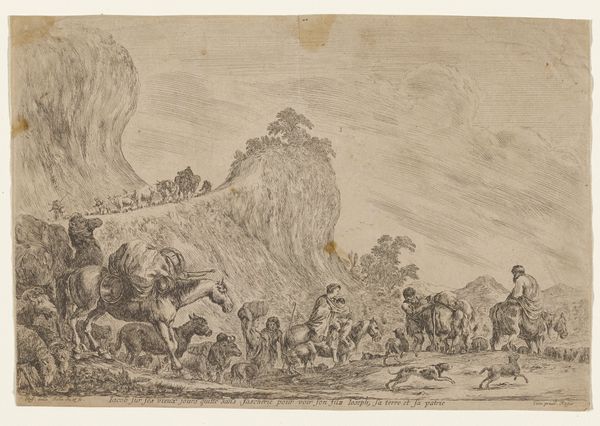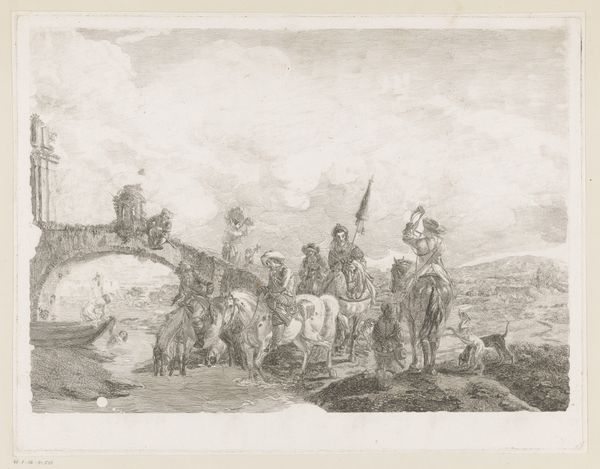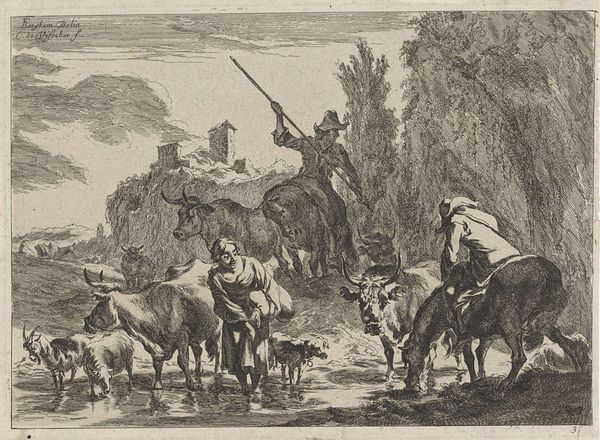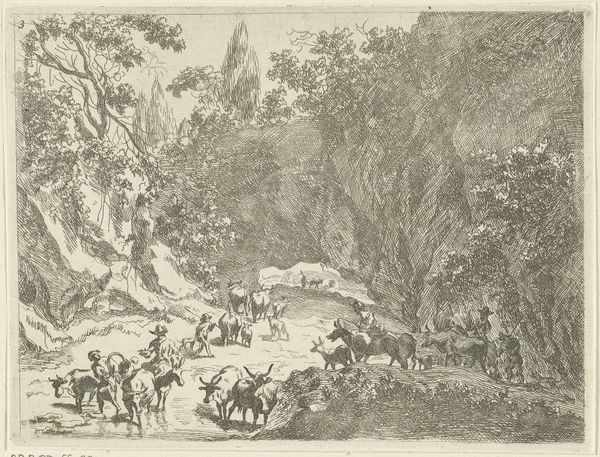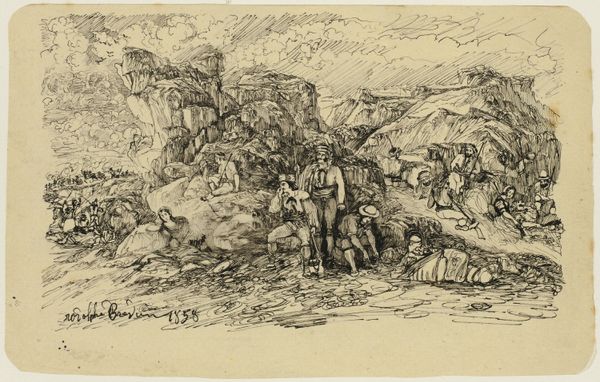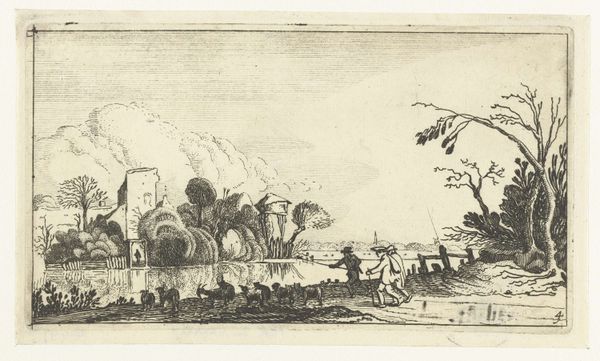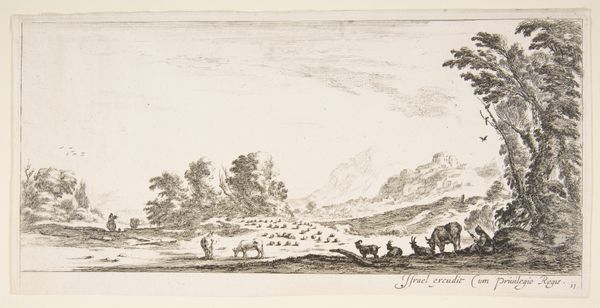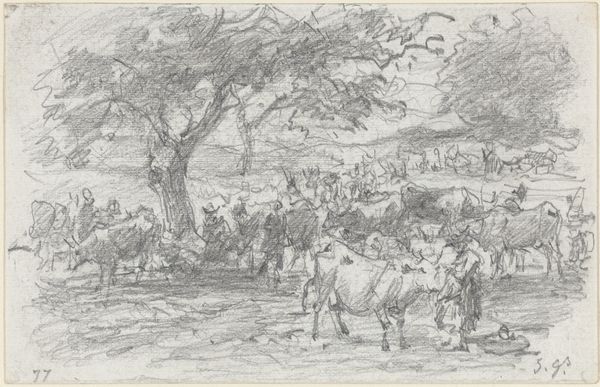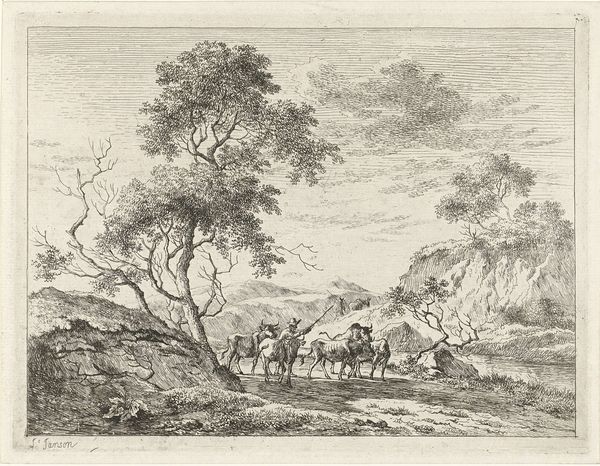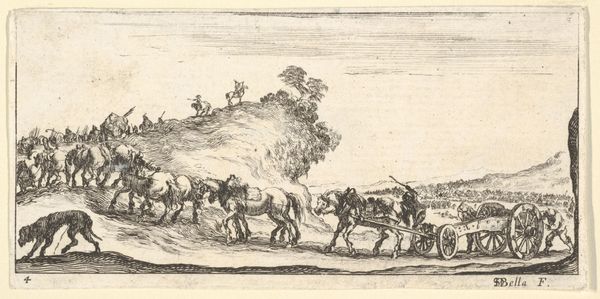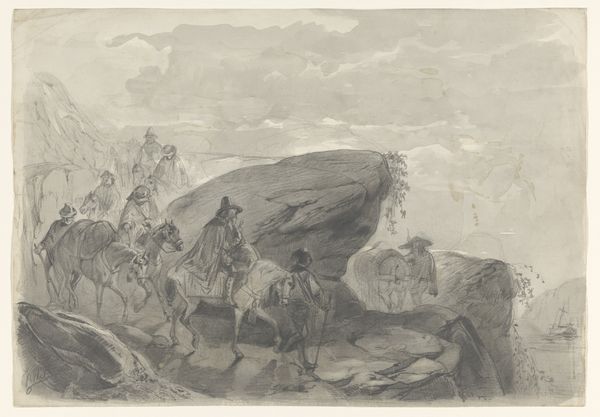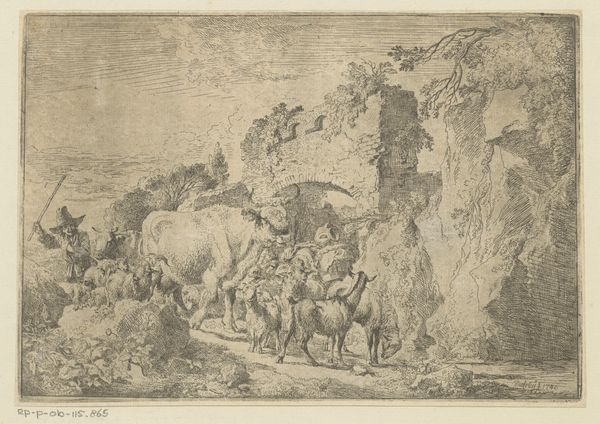
drawing, print, etching, ink
#
drawing
#
narrative-art
#
baroque
#
ink painting
# print
#
etching
#
pencil sketch
#
dog
#
landscape
#
figuration
#
ink
#
pencil drawing
#
horse
#
men
Dimensions: Sheet: 7 3/16 × 10 3/4 in. (18.2 × 27.3 cm)
Copyright: Public Domain
Editor: Stefano della Bella’s "The Journey of Jacob in Egypt," created between 1642 and 1652, uses etching and ink to depict this biblical scene. What immediately strikes me is how the weight of this journey is conveyed, not just through the loaded animals but in the very texture of the landscape. What do you see in this piece, thinking about its historical context and creation? Curator: Well, consider how the etching medium itself shapes our understanding. The laborious process of etching, biting into the metal plate with acid, reflects the physical labor inherent in this journey. Della Bella wasn’t just representing a story; he was actively engaged in a process mirroring the effort of movement and material conveyance. How does this inform your understanding of "landscape" as a style tag here? Editor: That's interesting. So the printmaking *process* itself becomes part of the narrative, underscoring the physical exertion involved. Thinking about labor, do you see a class dynamic embedded in the image, in terms of who does what labor, carrying what, and where that material wealth is headed? Curator: Precisely! Who profits from this journey? Etchings, as readily reproduced images, democratized art to some degree, making it accessible to a wider audience than painted commissions. Della Bella would have profited to some extent from the sales of this print. Consider how consumption and the art market shaped this "narrative-art." Who *was* his intended audience, and how did that affect his depiction of this scene? Editor: That makes me think about the level of detail he includes, like the specific breeds of the animals or the clothing, which, as a print, would have to be carefully considered since that labor contributes to clarity for a wider market. Curator: Yes. Every etched line represents a conscious decision. By understanding the economics of printmaking, the social function of imagery, and how that imagery functions *as* an object of trade and distribution, we see beyond the surface. Editor: So, looking at it this way makes me rethink the whole concept of ‘high art’ versus craft because it makes me realize just how intertwined the artist’s labor and the work's material production really are in conveying meaning! Curator: Exactly. That awareness, that attentiveness to material conditions, reframes our understanding and enriches the experience.
Comments
No comments
Be the first to comment and join the conversation on the ultimate creative platform.
